 Lindsey Fisher
.
August 29, 2025
.
Feature Stories
Lindsey Fisher
.
August 29, 2025
.
Feature Stories

Having an off-road-ready rig can take on many different forms, from dirt bikes and side-by-sides to prerunners and full-fledged rock crawlers. While very different, each of these off-road vehicles is purpose built for the terrain and obstacles they might encounter, with the most prevalent upgrades industry-wide culminating in the suspension systems.

Built to explore the great outdoors by way of back country roads and moderate 4×4 trails, Tom Freismuth’s 2023 Toyota Sequoia named Mad Yeti is no different. It features top-tier suspension upgrades in addition to a greatly improved factory engine and drivetrain setup, as well as added overlanding accessories to make it ready for anything!
“Maintaining its 3.4L twin-turbocharged V-6, Tom’s Sequoia is ready to take on both pavement and dirt, boasting added upgrades from a K&N Performance filters and MagnaFlow exhaust system.”


The Sequoia has long been loved by Toyota and off-road fans alike since its debut in 2000 as a 2001 model. Based off of the Tundra platform, the Sequoia offers the performance and longevity synonymous with Toyota products while offering more cargo and passenger room than its smaller SUV counterparts, the 4Runner and the RAV4.
For the 2023 model year, the Sequoia saw a drastic change, however, with the beloved standard 5.7L V-8 engine being replaced by a 3.4L twin-turbocharged V-6. While V-8 fans may have scoffed and downplayed the move to a V-6, the new-for-2023 3.4L is a more powerful and more potent engine than anything the Sequoia had been equipped with before. This meant not only a more efficient engine for the model, but also an improvement of over 50 horsepower and over 180 lb-ft of torque compared to the previous model year! Now who’s scoffing?!



Maintaining its 3.4L twin-turbocharged V-6, Tom’s Sequoia is ready to take on both pavement and dirt, boasting added upgrades from a K&N Performance filters and MagnaFlow exhaust system. Behind the SUV’s V6 is a 10-speed automatic transmission, standard fare for the model and a decent upgrade from the previous model’s 6-speed transmission. This powertrain setup helps give the Sequoia a greatly improved 9,100-pound tow rating, as well as the most potent engine and drivetrain combination in the full-size Toyota truck and SUV lineup to date.
But an improved engine and transmission are only going to take you so far when it comes to off-roading. That’s why Tom looked to ICON Vehicle Dynamics for a top-notch suspension system to bolster his off-road capable Sequoia even more.


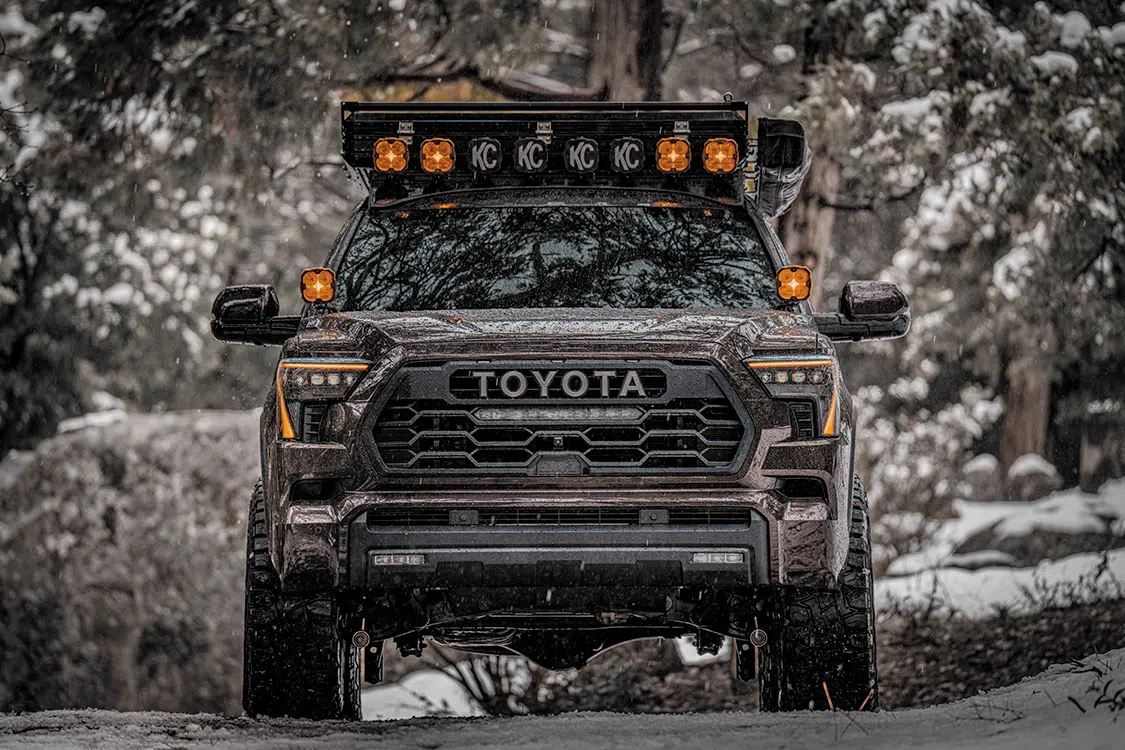
For many years now, ICON Vehicle Dynamics has developed and produced some of the best off-road suspension components the industry has to offer. From lift kits to long-travel setups, ICON continues to bring the off-road industry the suspension and chassis upgrades it wants, ranging from mild to wild.
Among its current top offerings is Compression Damping Electronic Valve or CDEV shock technology. This technology outfits your vehicle suspension with the ability to adjust almost instantaneously for varying terrain by electronically controlling the shock’s oil flow valve in order to regulate damping force within the shock when it’s compressed. This means extremely precise adjustments in as little as 40 milliseconds, all based on on-board gyroscope and G-force sensors, as well as user-defined settings.


Wanting to build a vehicle that could take him anywhere, Tom chose to upgrade his Sequoia’s suspension system with some of the latest and greatest technology from ICON, including shocks with CDEV technology. The result is a beautiful ride that’s ready to take on just about any trail Tom could point it down.
The platform for the Sequoia’s suspension is ICON’s Stage 8 complete suspension system, featuring everything from ICON’s purpose-built front and rear springs, to billet upper front control arms and rear lower links. This suspension setup allows for an adjustable 3- to 4.5-inch suspension lift to the vehicle.
“Subtly built (that is until you really start digging deeper), Tom’s Sequoia is a beautiful example of what overlanding vehicles can be.”


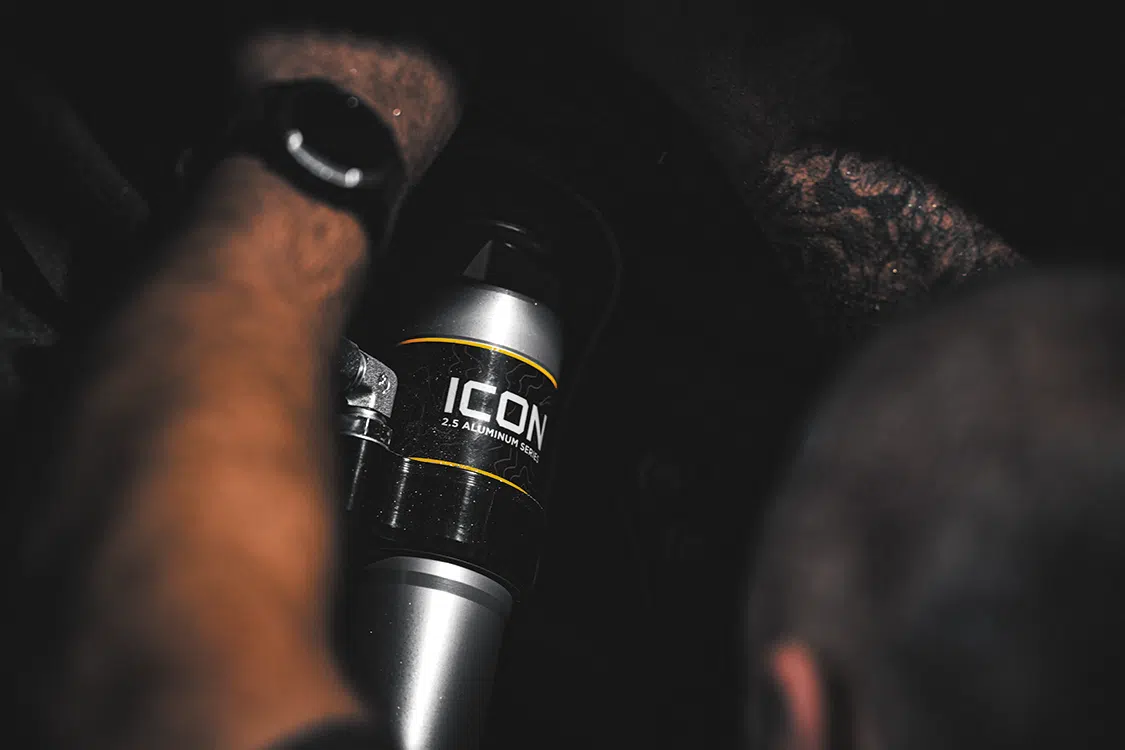
Paired with 2.5 Series remote reservoir coilover shocks with CDEV technology both front and rear, this setup gives the Sequoia added ground clearance, superior ride dynamics, and impressive micro terrain adjustments on the spot. If you’ve ever wanted a suspension system that offers it all for your overland vehicle, this may just be the one!
With the suspension upgrades in place, Tom was able to outfit his SUV with 35-inch Toyo Open Country R/T rubber. Wrapped around 18-inch ICON Alloys Compression HD wheels, these tires improve the Sequoia’s off-road worthiness even further.
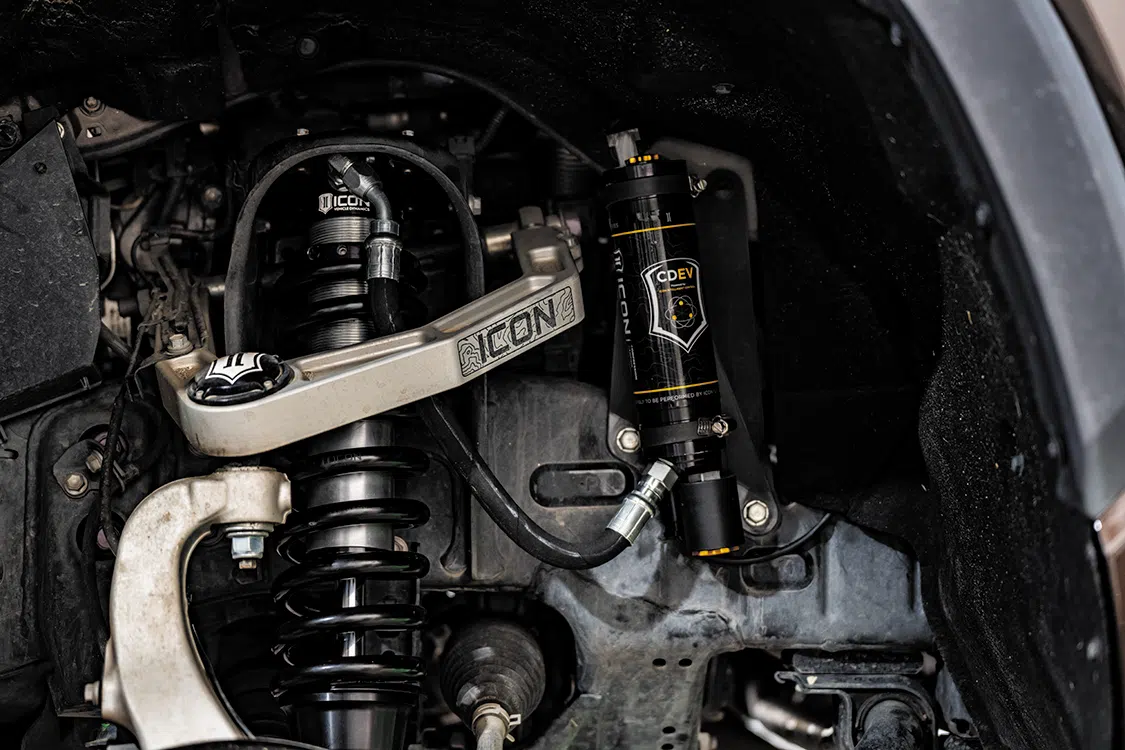

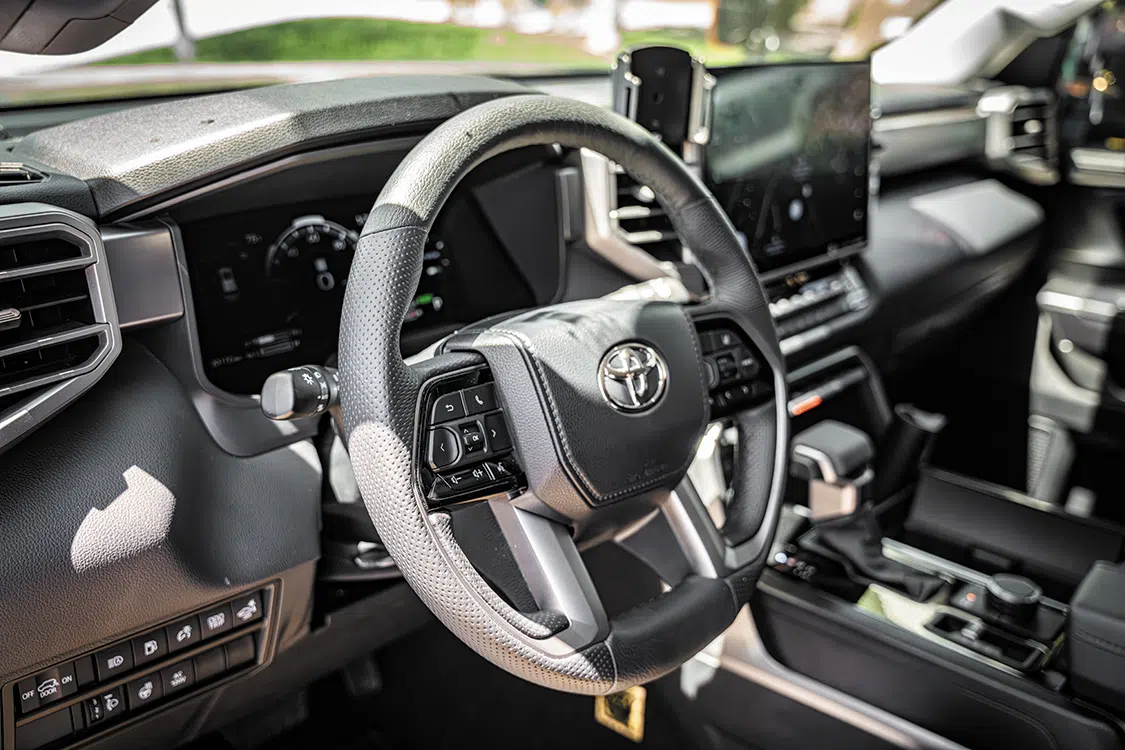
Overlanding is all about being able to go places that those set on sticking to the pavement can’t, but beyond that, it’s also about being prepared to spend at least a few days off the grid. With this in mind, Tom further outfitted his Sequoia with plenty of aftermarket gear to make his treks into the great outdoors that much more enjoyable.
Improved lighting on the Sequoia comes from AlphaRex NOVA-Series LED projector headlights, which are known for their defined long-range lighting pattern, as well as 10 secondary lights from KC HiLiTES, which grace the Toyota’s roof and A-pillars. CBI Offroad Covert bumpers help protect the front and rear of the SUV from body damage, as well as give it a bolder look, especially when paired with a TRD Pro front grille.



Overhead, a Westcott Designs roof rack makes strapping off-road necessities and bulky cargo to the roof a breeze while helping to protect the gorgeous factory Smoked Mesquite paint, one of the inspirations for the Sequoia’s name, below. The roof rack also makes bolting on the Cascadia Vehicle Tents Mt. Hood aluminum hard shell rooftop tent and 270-degree awning easy for off-road camping trips.
Subtly built (that is until you really start digging deeper), Tom’s Sequoia is a beautiful example of what overlanding vehicles can be. Outfitted with a proper suspension package, off-road ready wheels and tires, and just enough accessories to give it improved protection from trail scarring while also greatly increasing the functionality for spending days off the grid, this Sequoia is not only fully off-road and overlanding capable, it’s also good looking and plenty powerful both on- and off-road!


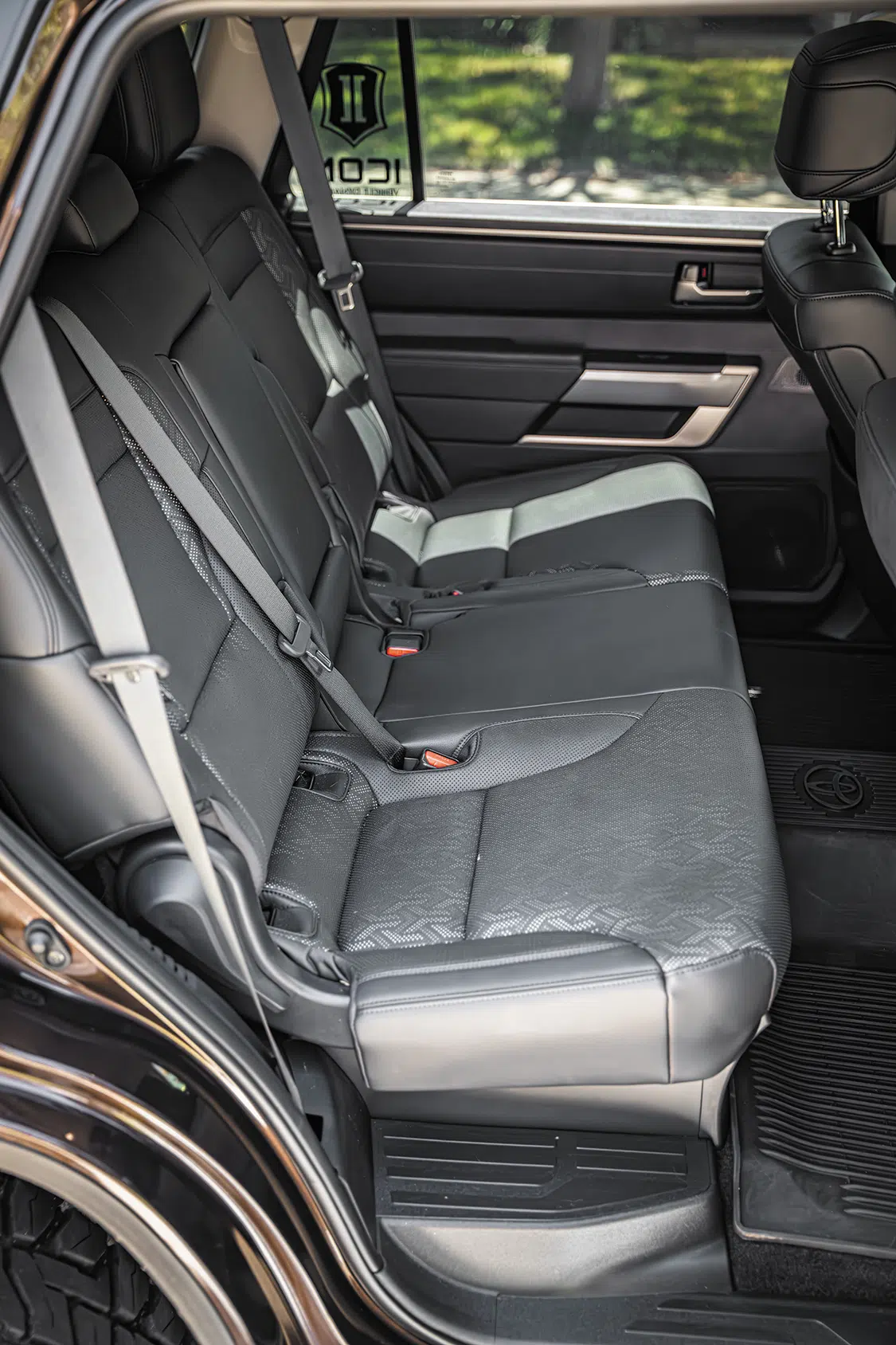

Tom’s advice to those looking to build a similarly capable and gorgeous truck? “Build your rig with purpose in mind. It’s easy to throw parts at it, but plan what you want and tackle it.” We couldn’t have said it any better ourselves.
“Build your rig with purpose in mind. It’s easy to throw parts at it, but plan what you want and tackle it.”






2023 Toyota Sequoia
OWNER:
Tom Freismuth
Escondido, CA
Chassis & Suspension:
4-inch ICON Vehicle Dynamics suspension lift; ICON Vehicle Dynamics Stage 8 suspension system; ICON Vehicle Dynamics 2.5 Series remote reservoir with Compression Damping Electronic Valve (CDEV) coilover shocks both front and rear; ICON Vehicle Dynamic springs front and rear; ICON Vehicle Dynamics billet upper front control arms; ICON Vehicle Dynamics billet rear lower links; Suspension components installed by ICON Vehicle Dynamics and Off Road Warehouse
Wheels & Tires:
18-inch ICON Alloys Compression HD wheels; 35-inch Toyo Open Country R/T tires
Engine & Drivetrain:
Toyota 3.4L twin turbocharged V-6; K&N air filters; 3-inch MagnaFlow Overland exhaust; 10-speed automatic transmission
Body & Paint:
TRD Pro grille; AlphaRex NOVA-Series LED projector headlights; 10 KC HiLiTES secondary lights; CBI Offroad Covert bumpers; Westcott Designs roof rack; Cascadia Vehicle Tents Mt. Hood aluminum hard shell rooftop tent; Cascadia Vehicle Tents 270-degree awning; Factory Smoked Mesquite paint
Interior & Sound:
Factory SofTex black upholstery
Editor’s Note: A version of this article appeared in TREAD July/August 2024
Share Link